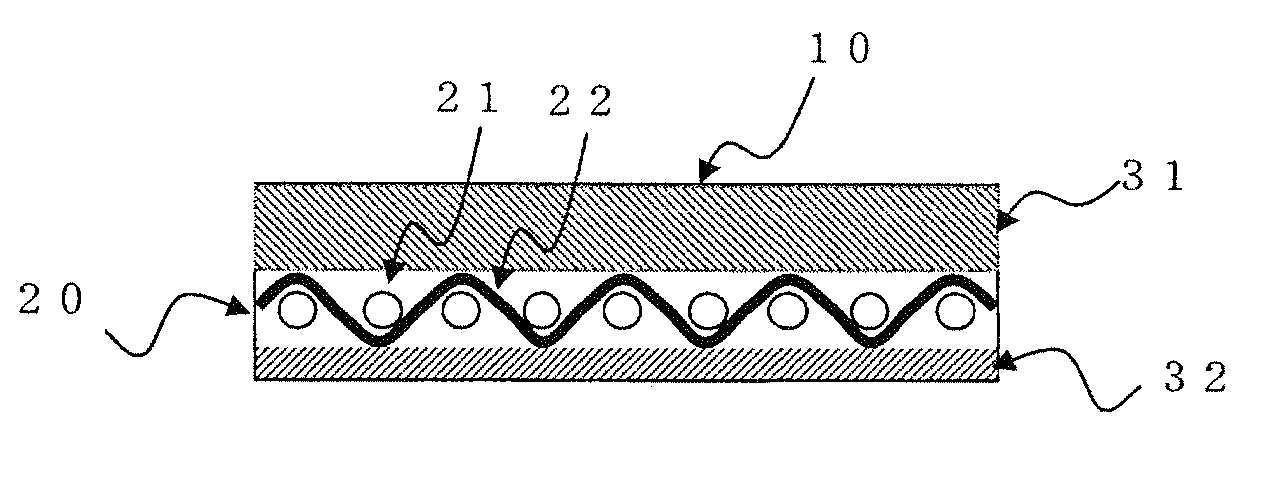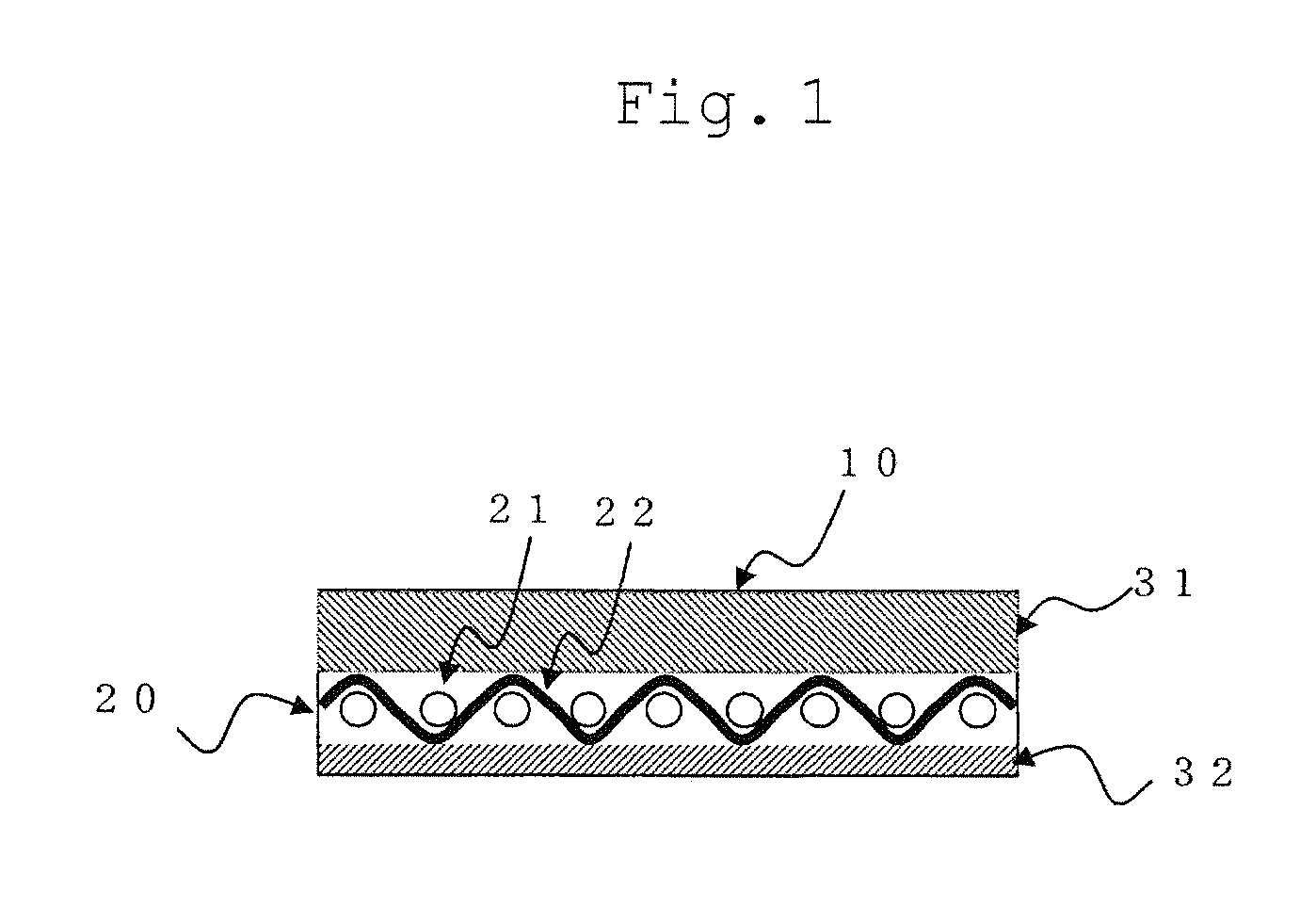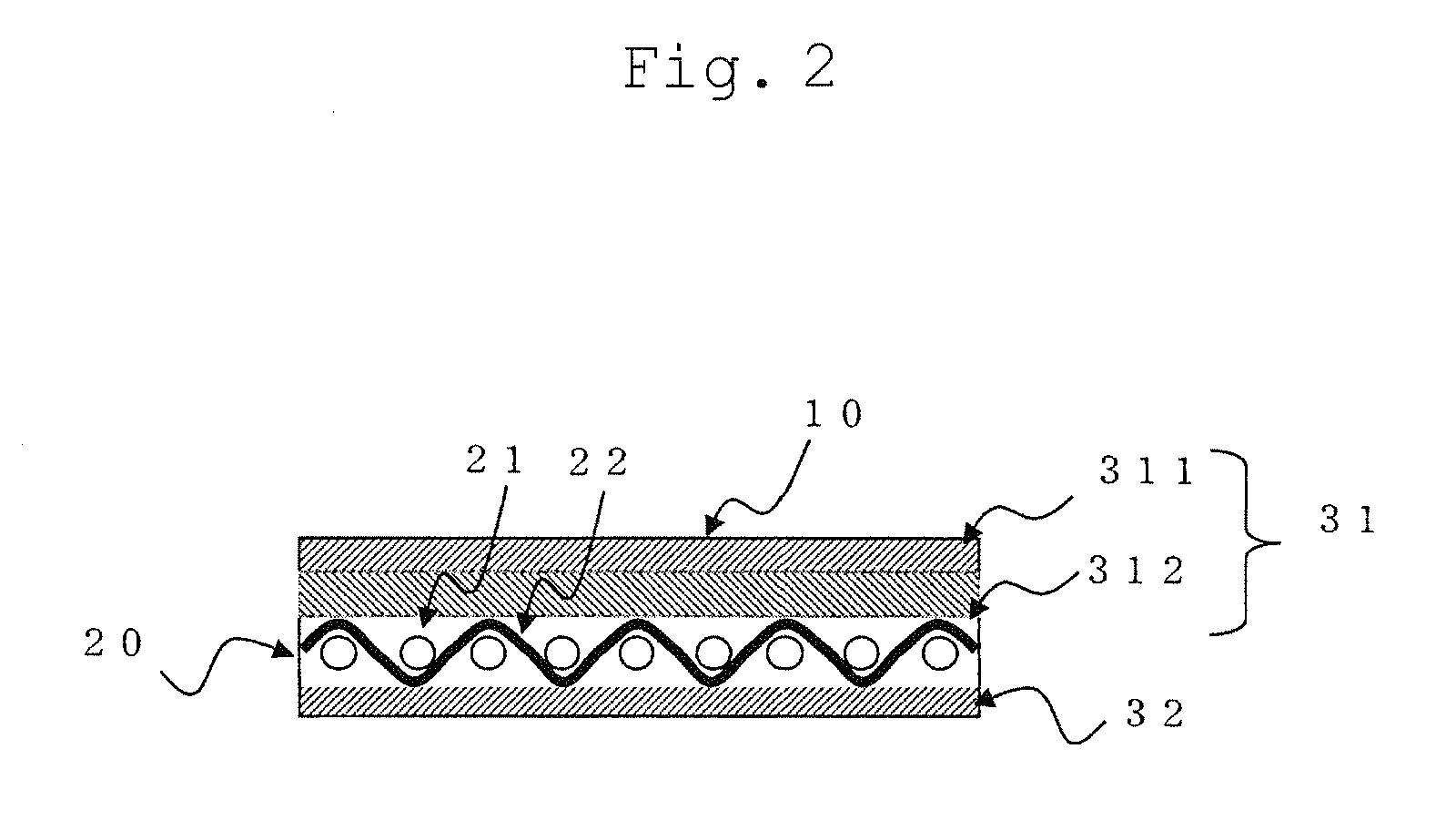Felt for papermaking
a papermaking and felt technology, applied in the field of felt for papermaking, can solve the problems of insufficient effectiveness to prevent rewetting phenomenon, inability to easily set in a papermaking machine, and poor papermaking
- Summary
- Abstract
- Description
- Claims
- Application Information
AI Technical Summary
Benefits of technology
Problems solved by technology
Method used
Image
Examples
examples
[0046]Following tests were conducted to determine the effects of the papermaking felt of the present invention.
[0047]In order to test examples and comparative examples under the same condition, all the felts have common basic structure as follows:
Base body: 1 / 1 plain-weave fabric woven with nylon monofilament twist yarn, with a basis weight of 750 g / m2
The wet paper web side batt fiber layer: 17dtex nylon 6 staple fiber, with a basis weight of 500 g / m2
The backside batt fiber layer: a fiber layer of a blend of 17dtex staple fiber of the core-in-sheath conjugate fiber specified below and 17dtex staple fiber of nylon 6, with a total basis weight of 200 g / m2. The content of the core-in-sheath conjugate fiber is specified in Table 1.
Core-in-sheath conjugate fiber: a synthetic fiber, the core member being nylon 6 and the sheath member being copolymerized nylon 6 / 12, the weight percent ratio of which is 1:1.
[0048]The wet paper web side batt fiber layer and the backside batt fiber layer we...
PUM
 Login to View More
Login to View More Abstract
Description
Claims
Application Information
 Login to View More
Login to View More - R&D
- Intellectual Property
- Life Sciences
- Materials
- Tech Scout
- Unparalleled Data Quality
- Higher Quality Content
- 60% Fewer Hallucinations
Browse by: Latest US Patents, China's latest patents, Technical Efficacy Thesaurus, Application Domain, Technology Topic, Popular Technical Reports.
© 2025 PatSnap. All rights reserved.Legal|Privacy policy|Modern Slavery Act Transparency Statement|Sitemap|About US| Contact US: help@patsnap.com



